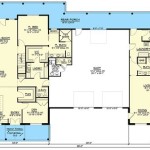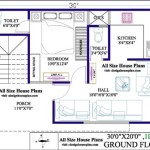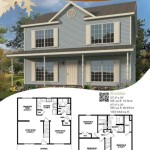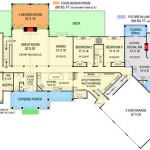Floor Plans With Safe Rooms
Home safety is a growing concern for many individuals and families. Incorporating a safe room into a home's design provides a secure space for refuge during emergencies. This article explores various floor plan considerations for effectively integrating safe rooms into new constructions and existing homes.
Key Considerations for Safe Room Placement
The location of a safe room within a house plays a crucial role in its accessibility and overall effectiveness. Strategic placement ensures quick access during emergencies and can enhance the room's inconspicuousness.
- Proximity to bedrooms: Locating the safe room near the bedrooms allows for rapid access during nighttime emergencies.
- Central location: A centrally located safe room provides relatively equal access from all parts of the house.
- Discreet integration: Integrating the safe room seamlessly into the house’s design can help maintain its low profile.
- Accessibility: Ensure the path to the safe room is clear and free of obstacles.
Safe Room Design and Features
Safe rooms vary in their level of protection, depending on the anticipated threats. Careful consideration should be given to construction materials, reinforcement, and communication capabilities.
- Reinforced walls, doors, and ceilings: Solid core doors with heavy-duty frames and reinforced walls are essential for providing robust protection.
- Communication systems: Installation of a phone line, cell phone signal booster, or two-way radio can maintain communication with the outside world.
- Ventilation: A ventilation system with an independent air supply is crucial for prolonged stays in the safe room.
- First aid kit and emergency supplies: Stocking the safe room with essential supplies such as water, food, first aid kit, and flashlights is vital for preparedness.
Integrating Safe Rooms into New Constructions
Incorporating a safe room during the design phase of a new home offers flexibility in its placement and integration. This allows for more customized solutions tailored to specific needs and preferences.
- Customized design: New constructions allow for specific design elements, including reinforced concrete walls or steel framing.
- Hidden access points: Architects can design discreet entrances to the safe room, such as hidden doors disguised as bookshelves or closets.
- Integration with smart home systems: Smart home technology can be used to control lighting, security systems, and communication within the safe room.
Retrofitting Safe Rooms in Existing Homes
While incorporating a safe room during new construction is ideal, existing homes can be retrofitted with safe rooms. This often involves modifying existing spaces to meet safety requirements.
- Utilizing existing spaces: A closet, interior room, or basement area can be converted into a safe room.
- Reinforcing existing structures: Strengthening walls, doors, and windows can enhance the security of the chosen space.
- Cost considerations: Retrofitting a safe room can be more expensive than incorporating one during new construction, and costs can vary depending on the level of security desired.
Floor Plan Examples with Safe Rooms
Effective floor plans incorporate safe rooms seamlessly while maintaining accessibility and functionality. Examples include integrating a safe room into a master suite closet or incorporating it into a basement design near storage areas.
- Master Suite Safe Room: Integrating the safe room within a master suite closet provides quick access during emergencies and can be concealed effectively.
- Basement Safe Room: Utilizing a section of the basement for a safe room offers ample space and potential for discreet access.
- Panic Room Design: smaller, fortified rooms, often called panic rooms, can be integrated into various areas of the house, providing a quick refuge point.
Safe Room Considerations for Specific Threats
Different threats call for different levels of protection. Understanding the potential risks informs the design and construction of the safe room.
- Natural Disasters: Safe rooms designed for extreme weather events should consider structural integrity to withstand high winds, flooding, and debris impacts.
- Intrusion: Safe rooms designed for home invasions should prioritize robust doors, locks, and intrusion detection systems.
- Fire Safety: Fire-resistant materials and a separate air supply are essential for safe rooms intended to provide refuge from fire.
Regulations and Standards for Safe Rooms
Building codes and guidelines exist to ensure the effectiveness and safety of safe rooms. Consulting local building codes and FEMA guidelines is essential when designing and constructing a safe room.
- FEMA guidelines: FEMA P-320 provides detailed information on designing and constructing safe rooms.
- Local building codes: Compliance with local building codes is critical for ensuring the safe room meets safety and structural requirements.
- Professional consultation: Working with a structural engineer or a contractor specializing in safe room construction can ensure proper design and adherence to regulations.
Choosing the right safe room design involves careful planning and consideration of specific needs and potential threats. By understanding these factors, homeowners can create a secure space that provides peace of mind during emergencies.

Plan 59527nd Lovely 4 Bed Home Design With Safe Room

One Level Hill Country House Plan With Safe Room 48600fm Architectural Designs Plans

Exclusive One Level House Plan With Safe Room 510182wdy Architectural Designs Plans

Elegant One Story House Has Safe Room Plan 4906

3 Bed 3870 Sq Ft Farmhouse Plan With Safe Room Wraparound Porch

1 Story Barndominium House Plan With Safe Room 2758 Sq Ft 623116dj Architectural Designs Plans

Acadian House Plan With Safe Room 83876jw Architectural Designs Plans

Pin Page

Ultimateplans Com House Plan Home Floor Number 101159

3 Bed 3870 Sq Ft Farmhouse Plan With Safe Room Wraparound Porch








